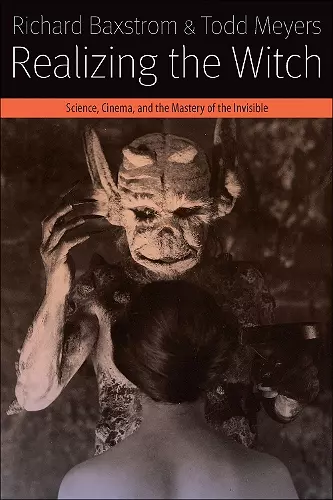Realizing the Witch
Science, Cinema, and the Mastery of the Invisible
Todd Meyers author Richard Baxstrom author
Format:Paperback
Publisher:Fordham University Press
Published:2nd Nov '15
Currently unavailable, and unfortunately no date known when it will be back

Benjamin Christensen’s Häxan (The Witch, 1922) stands as a singular film within the history of cinema. Deftly weaving contemporary scientific analysis and powerfully staged historical scenes of satanic initiation, confession under torture, possession, and persecution, Häxan creatively blends spectacle and argument to provoke a humanist re-evaluation of witchcraft in European history as well as the contemporary treatment of female “hysterics” and the mentally ill.
In Realizing the Witch, Baxstrom and Meyers show how Häxan opens a window onto wider debates in the 1920s regarding the relationship of film to scientific evidence, the evolving study of religion from historical and anthropological perspectives, and the complex relations between popular culture, artistic expression, and concepts in medicine and psychology. Häxan is a film that travels along the winding path of art and science rather than between the narrow division of “documentary” and “fiction.” Baxstrom and Meyers reveal how Christensen’s attempt to tame the irrationality of “the witch” risked validating the very "nonsense" that such an effort sought to master and dispel. Häxan is a notorious, genre-bending, excessive cinematic account of the witch in early modern Europe. Realizing the Witch not only illustrates the underrated importance of the film within the canons of classic cinema, it lays bare the relation of the invisible to that which we cannot prove but nevertheless “know” to be there.
"Benjamin Christensen's 1922 film Haxan is well known for some of the wrong reasons. Realizing the Witch rescues Haxan from the sensationalist prurience of the entertainment market, and subjects it to careful historical scrutiny and a lively close reading that exploits the resources of film history and theory. The authors explore Christensen's use of his contemporaries' research into witchcraft, psychology, and anthropology and refract their analysis through up-to-date scholarship on these topics. They conclude that Christensen hoped to 'materialize' the figure of the Witch, setting a trap that would 'possess' the audience. The implications of this interdisciplinary study will be of interest to researchers and teachers in all these fields, not least the history of witchcraft studies." -- -Walter Stephens Johns Hopkins University "Baxstrom and Meyers have a keen eye for the wondrous otherness of Christensen's work, never missing an opportunity to theorize the film's struggles with the ontological slipperiness of the witch, cinema as absent presence, and questions of recording, witnessing, and irrationality in twenty-first century science and culture." -- -Alison Griffiths City University of New York "Baxstrom and Meyers' book is more than a meticulous analysis of Benjamin Christensen's masterpiece Haxan, more than a model monograph. It finds and charts undiscovered tracks in the field of film studies, tracks that the authors invest with methods of analysis inspired by Warburgian iconology. In the light of their work, the film becomes a privileged way of accessing the history of discourses and representations." -- Philippe-Alain Michaud Director and Film Curator, Musee national d'art moderne--Centre Georges Pompidou "This is a powerful and highly original work that makes significant contributions to a number of areas of contemporary scholarship, including visual anthropology, the anthropology of witchcraft, cinema studies and science studies. At the same time it succeeds impressively in communicating the authors' own admiration and enthusiasm for an often negelcted masterpiece of silent cinema. The professed aim of Christensen's Haxen was to show that witchcraft was a misidentified nervous disease and thus to illustrate the incompatibility of superstition and religious fanaticism with modernity and science. In fact, as the authors point out, the film exceeds such a scientific enframing of its subject-matter, its effect being rather to "give the witch life." Their analysis shows how both Christensen and they themselves as spectators are, in Jeanne Favret-Saada's phrase, "caught" by the phenomenon of witchcraft in such a way that it can no longer be held at a safe analytic distance as an instance of the (misguided) beliefs of others. Instead, they suggest, Christensen's film complicates its own status as a 'truthful' representation. In doing so it opens up intellectual and imaginative possibilities beyond any straightforward opposition between 'documentary' and 'fiction' and raises important and unsettling questions not only about witchcraft, modernity and cinematic representation but also about the past, present and future of anthropology." -- -Stuart McLean University of Minnesota "Realizing the Witch is a highly original, exciting, and important book. With this work, Richard Baxstrom and Todd Meyers establish themselves as pioneering scholars in the emerging field between media studies and the history of science." -- -Henning Schmidgen Professor of Media Studies at the Bauhaus University Weimar, Germany
ISBN: 9780823268252
Dimensions: unknown
Weight: unknown
296 pages